Bodyboard Wetsuits
Bodyboard Wetsuits are essential for Bodyboarding and a range of other watersports. There are many different types on the UK market, and choosing a suitable Wetsuit can be overwhelming.
Here are the best brands of wetsuits, different types and key features to help you decide the best wetsuit for your specific Bodyboarding needs or sport.
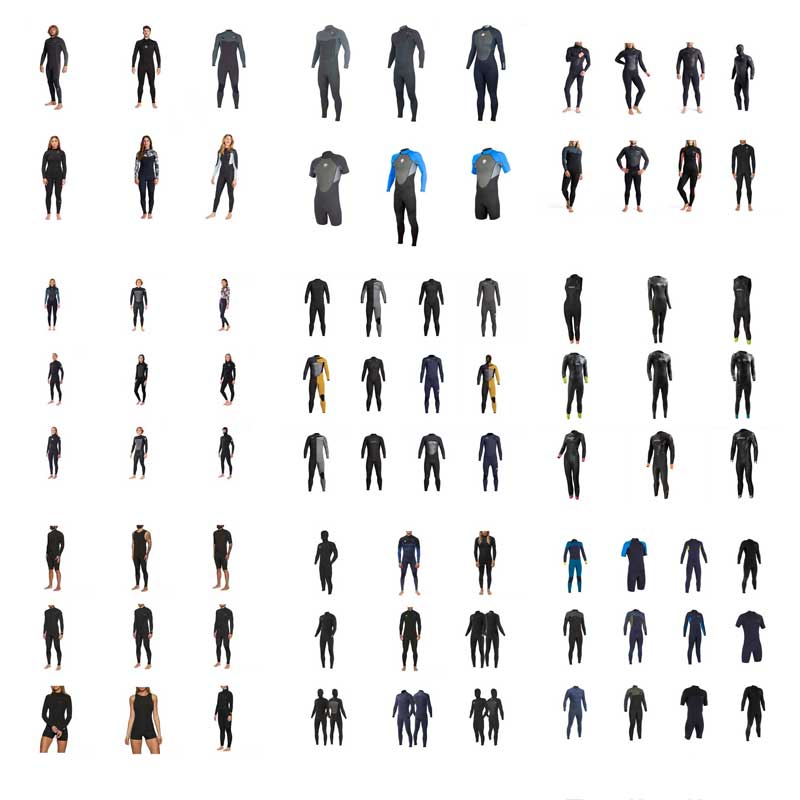
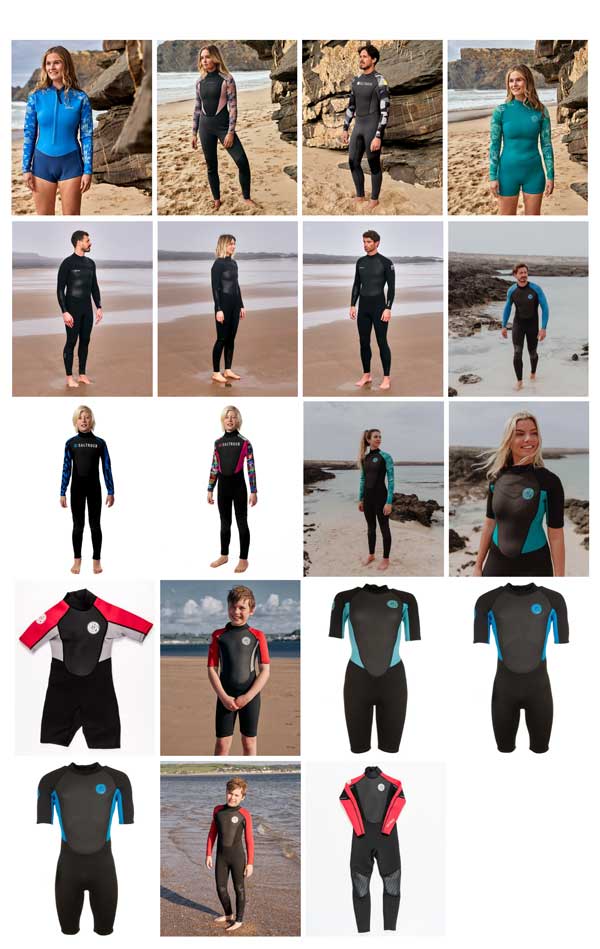
Saltrock Wetsuits
Saltrock Wetsuits has supplied high-quality wetsuits made from high-performance neoprene for over three decades. In addition, these suits boast blind stitched seams, offering exceptional insulation and durability.
Available in diverse styles, designs, and sizes, their wetsuit range caters to a wide range of watersports pursuits.
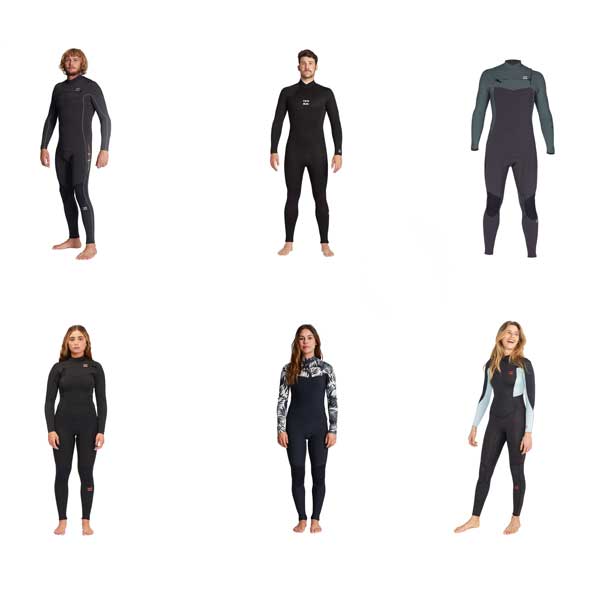
Billabong Wetsuits
Billabong Wetsuits, a prominent brand in the watersports realm, consistently demonstrates its dedication to crafting top-quality, long-lasting products.
Their rigorous research and development efforts have culminated in advanced wetsuits that deliver outstanding comfort, performance, and safety.
Catering to all skill levels, Billabong is an excellent option for novice bodyboarders and seasoned surfers alike.

Alder Wetsuits
Alder Wetsuits are expertly designed to offer comfort, protection, and performance in the water. Crafted with high-quality materials, these wetsuits ensure flexibility, buoyancy, and unparalleled durability.
In addition, each wetsuit features neoprene thicknesses tailored to specific body types for the perfect fit.
In addition to their wetsuits, Alder offers a comprehensive range of accessories such as boots, gloves, and hoods, ensuring you’re fully equipped for your time in the waves.
Whether you’re a seasoned surfer or embarking on your water adventures, rely on Alder Wetsuits for unmatched quality at competitive prices.
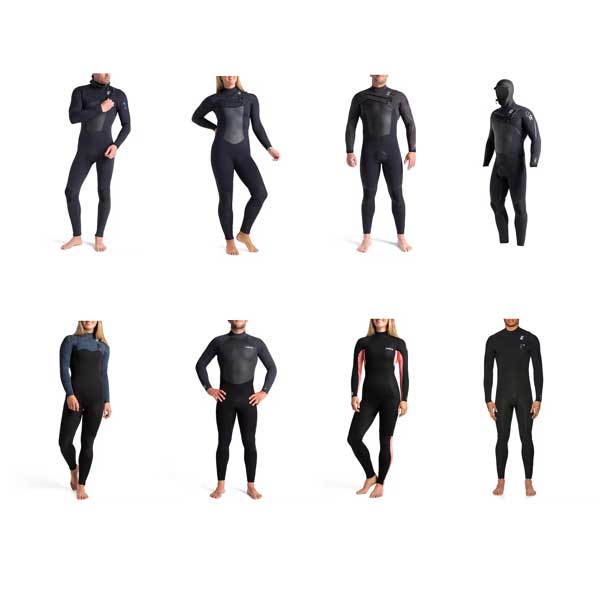
C-Skins Wetsuits
C-Skins Wetsuits presents a comprehensive selection of wetsuits crafted to grant you total flexibility and freedom while in the water.
These high-performance wetsuits utilise advanced neoprene materials for optimal comfort and protection against the elements, ensuring lasting durability without easy wear or damage.
Catering to men, women, and children, C-Skins offers an array of sizes and styles to accommodate all users.
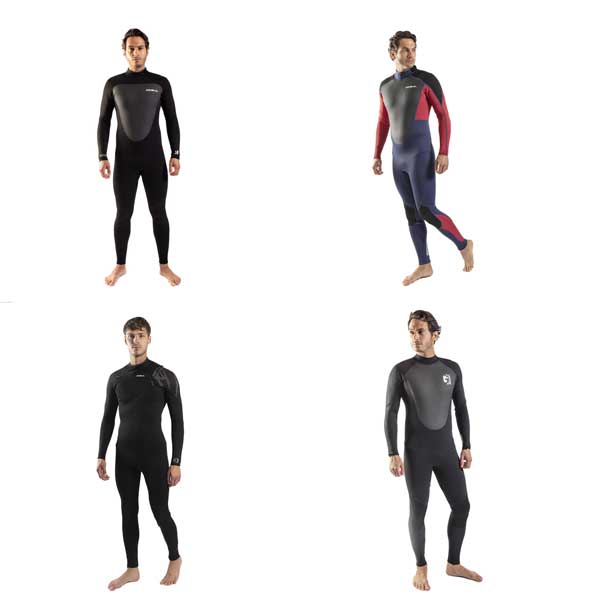
Gul Wetsuits
With over 50 years of experience, Gul has earned a solid reputation in the watersports equipment industry due to their unwavering commitment to quality and innovation.
Gul wetsuits are constructed using neoprene lamination, glued and blindstitched seams, and a cutting-edge titanium lining system, which all reduce wind chill by retaining body heat even when wet.
In addition, Gul provides an assortment of sizes and styles to accommodate all watersports enthusiasts.
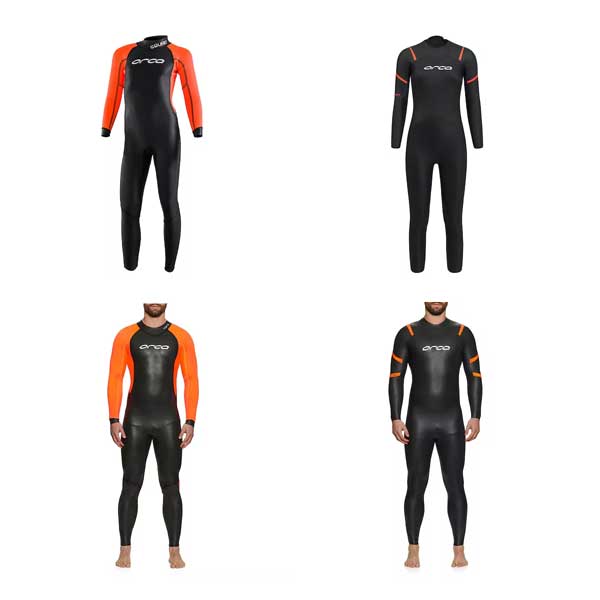
Orca Wetsuits
Orca Wetsuits, meticulously crafted from high-quality materials and designed with keen attention to detail, offer a diverse range of wetsuits for watersports enthusiasts at all skill levels.
In addition, Orca full wetsuits provide extensive coverage and insulation against the cold, whether you’re a novice or a seasoned professional.

Quicksilver Wetsuits
Quicksilver Wetsuits utilise top-quality materials to ensure warmth, comfort, and protection as you venture into the ocean.
With advanced construction methods and high-grade fabrics, Quicksilver delivers unmatched performance, guaranteeing a snug fit that keeps water out while offering maximum stretch and ideal warmth. Employing specialised stitching techniques, Quicksilver wetsuits are built to last, promising years of enjoyment.
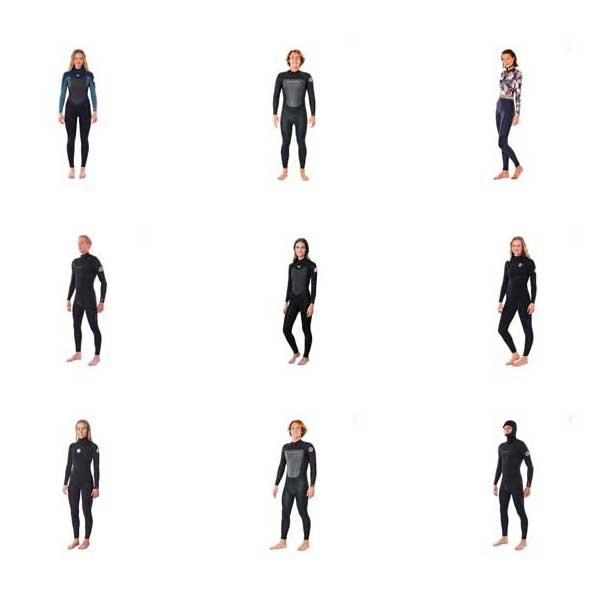
Ripcurl Wetsuits
Ripcurl Wetsuits are crafted to offer exceptional warmth and comfort for surfing in chilly waters. Incorporating innovative technologies like E3 neoprene and Rip Curl O2 rubber, these wetsuits deliver flexibility, insulation, and resistance to abrasion.
Ripcurl wetsuits include adjustable straps for enhanced security, strategically positioned seams for increased mobility, and reinforced knee pads for added durability.
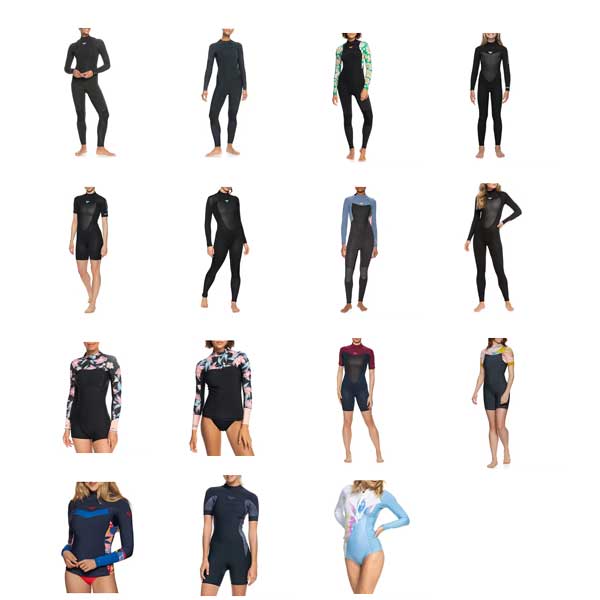
Roxy Wetsuits
Roxy stands out as a leading global brand for women’s surfing. Their wetsuits are designed to fit seamlessly like a second skin, instilling confidence as you ride the waves and turning your surfing dreams into reality.
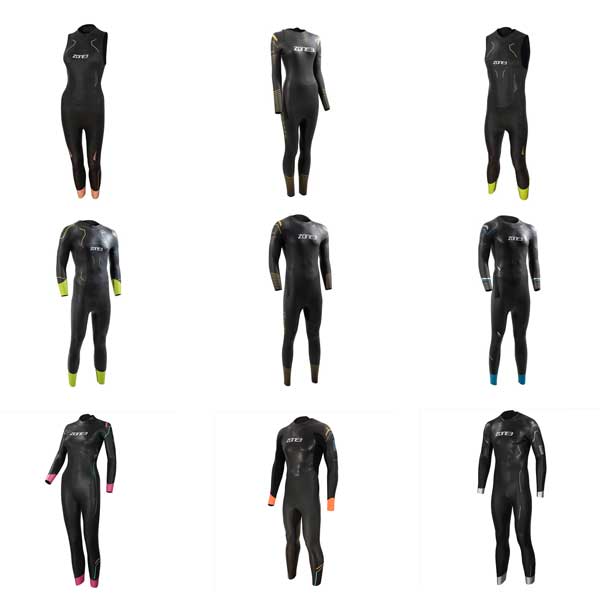
Zone 3 Wetsuits
Zone 3 Wetsuits prioritise performance and comfort, incorporating various materials that offer warmth, support, flexibility, and a natural fit. In addition, the robust construction guarantees your wetsuit’s longevity over multiple seasons.
Catering to seasoned watersports enthusiasts and newcomers embarking on aquatic journeys, Zone 3 has a wetsuit to suit your needs.
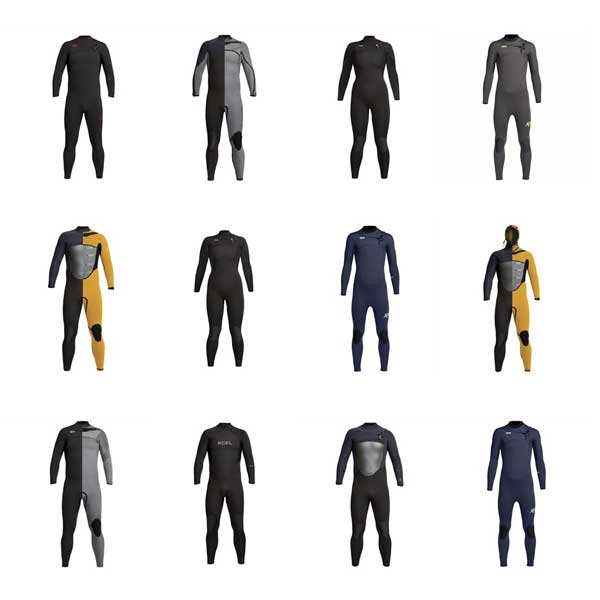
Xcel Wetsuits
Since 1982, Xcel Wetsuits has been a prominent wetsuit specialist, equipping athletes with cutting-edge, high-quality products. Xcel offers an array of wetsuit styles, ensuring the perfect fit for your requirements.
They also feature gloves, boots, hoods, and rash guards for comprehensive protection during your preferred watersport.
Utilising advanced technologies like X-Foam neoprene for added insulation against cold temperatures and X-Zip closures for effortless entry and exit, Xcel Wetsuits are designed to boost performance by delivering comfort and flexibility.
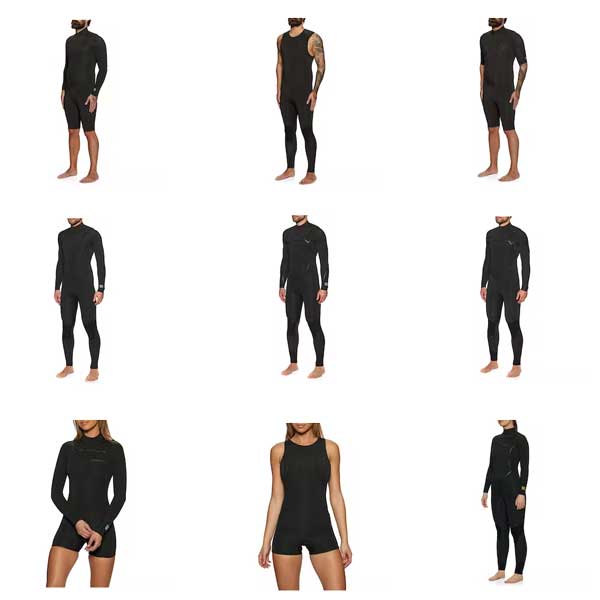
Patagonia Wetsuits
Patagonia Wetsuits are engineered to fulfil the most stringent performance criteria. Utilising their proprietary Yulex natural rubber neoprene, these wetsuits are produced through a low-impact manufacturing process that minimises toxic material usage, lowers greenhouse gas emissions, and conserves water.
The outcome is an eco-friendly wetsuit offering remarkable warmth, stretch, and flexibility. Patagonia Wetsuits come with an Ironclad guarantee, allowing you to return the product for repair, replacement, or a refund if it fails to meet your expectations.

Decathlon Wetsuits
Decathlon Wetsuits are crafted to provide bodyboarders and watersports enthusiasts of all skill levels with optimal performance and safety in the water. Decathlon wetsuits ensure the utmost comfort, durability, flexibility, and freedom of movement while in the water.
The materials used in Decathlon Wetsuits are impressively lightweight yet remarkably durable, making them ideal for a wide range of watersports.
Thanks to Decathlon’s top-notch construction, materials, and technology, you can expect unrivalled performance and protection in the water.
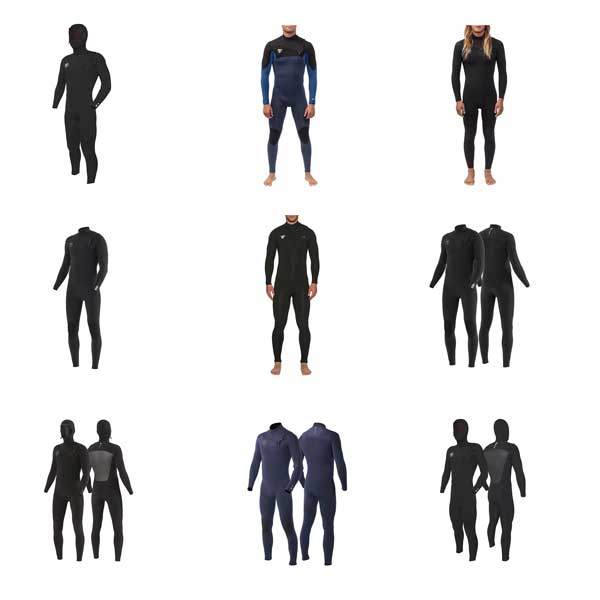
Vissla Wetsuits
Vissla Wetsuits delivers high-quality, inventive wetsuits catering to surfers across all ability levels.
These wetsuits ensure warmth, comfort, and flexibility in any water condition, allowing for peak performance without compromising style.
Vissla provides an extensive range of wetsuits for men, women, and children in various sizes and price points to accommodate any budget.
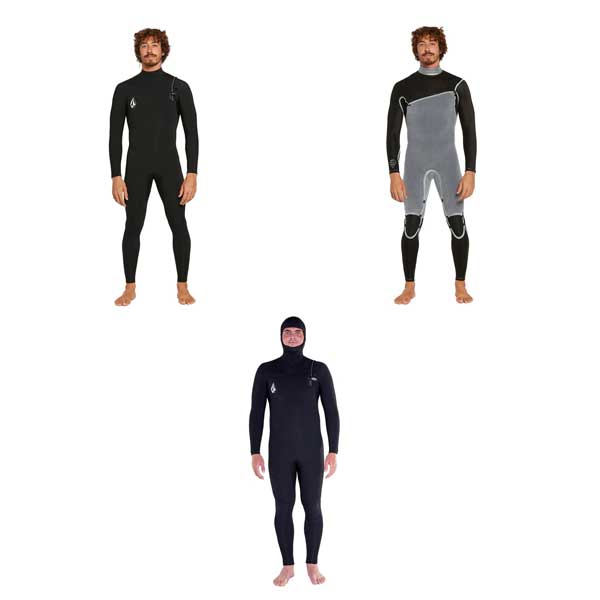
Volcom Wetsuits
Volcom wetsuits are renowned for their exceptional performance and quality. Established in the early ’90s, the Volcom brand has garnered a dedicated fan base among ocean enthusiasts.
With a focus on quality and durability, you can trust that your Volcom wetsuit will endure multiple seasons of use. Perfect for bodyboarding in the waves or exploring the ocean’s depths, their wetsuits offer all the essentials for a secure and pleasurable experience.
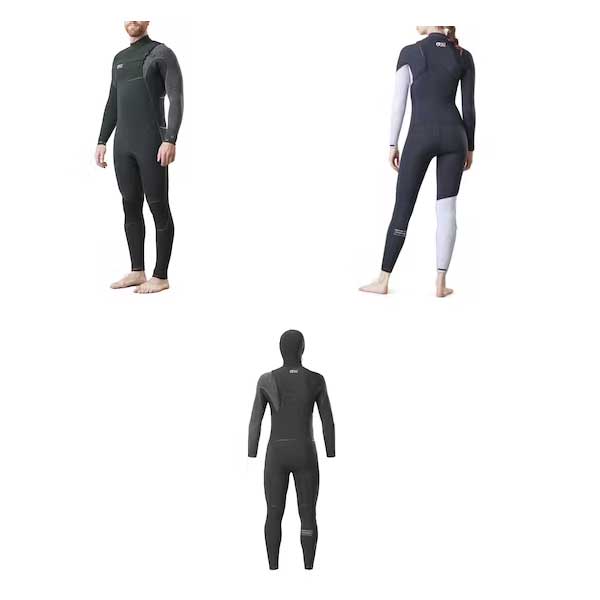
Picture Wetsuits
Picture Wetsuits deliver an unrivalled blend of comfort, technology, and style, the ideal choice for water enthusiasts seeking to make the most of their time in the waves.
Picture Wetsuits offer unrestricted movement and ensure warmth and comfort while in the water. The unique design also boasts a significant degree of buoyancy, enabling you to float longer with minimal effort, allowing you to spend more time in the water and excel in your preferred watersport activities.
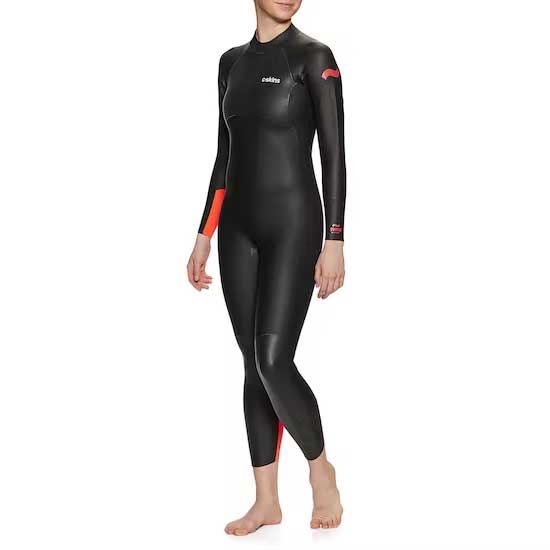
Swim Research Wetsuits
Swim Research Wetsuits are engineered to deliver the utmost comfort and performance. The design enhances buoyancy, insulation, and range of motion in the water, enabling swimmers to preserve proper form and technique while wearing the suit, considerably minimising fatigue during extended swims.
Moreover, Swim Research wetsuits incorporate quick-drying materials, allowing users to seamlessly transition between pool and beach without concerns about coldness or discomfort. Catering to everyone from casual swimmers to professional athletes, Swim Research Wetsuits are an ideal choice for all.
The Role of Wetsuits
Wetsuits serve several important purposes.
A wetsuit ensures the wearer’s safety and comfort and aids performance in water sports. The key roles of a wetsuit include:
Insulation
Wetsuits are designed to provide thermal insulation, retaining body heat in cold water.
They are made of neoprene, a synthetic rubber material with tiny air bubbles that trap body heat and slow heat loss.
The insulation enables wearers to participate in water sports for longer periods.
Buoyancy
The air bubbles within the neoprene material also increase buoyancy, helping the wearer stay afloat more easily.
This is especially beneficial for those who require additional buoyancy while in the water.
Protection
Wetsuits offer a layer of physical protection from various hazards, such as sharp rocks, coral, marine life, and UV radiation. They also reduce the risk of abrasions, cuts, and scrapes during water sports.
Flexibility and range of motion
Modern wetsuits are designed flexibly, using strategically placed seams, panels, and varying neoprene thicknesses.
The range of motion and comfort enables wearers to move freely and efficiently in water.
Reduced drag
Wetsuits are designed to streamline the body and minimise water resistance, allowing wearers to move easier through the water resulting in improved performance and reduced fatigue.
Quick-drying
Wetsuits are made from materials that dry quickly, which is advantageous when transitioning between water-based activities and land or during multi-day events.
By fulfilling these roles, wetsuits enable safe and comfortable participation in various water sports regardless of temperature or conditions.
Wetsuit Types
Wetsuits come in various types to cater to different water sports, temperature ranges, and personal preferences. Here are some of the main types of wetsuits
Full Suit
A full suit covers the entire body and is designed to provide maximal thermal protection for colder water temperatures.
Spring Suit
A spring suit covers the torso but has short sleeves and short legs. This type of wetsuit is ideal for warmer water, where full-body coverage is not required.
Long John/Jane
Long John (for men) and Long Jane (for women) wetsuits have full-length legs but no sleeves.
These suits provide lower body coverage and are suitable for activities where the upper body requires more freedom of movement, such as kayaking, stand-up paddleboarding, or sailing. They are often used in mild to warm water temperatures.
Short John/Jane
Short John (for men) and Short Jane (for women) wetsuits have short legs and no sleeves, providing less coverage than a Long John/Jane. Ideal for warm water and activities where freedom of movement is essential.
Wetsuit Jacket
Wetsuit jackets are designed to provide additional upper body insulation and wind protection.
They can be worn alone or with other wetsuit types like Long John/Jane or wetsuit pants. Wetsuit jackets typically have a front zip and can have long or short sleeves.
Wetsuit Trousers
Wetsuit Trousers or leggings cover the lower body, providing additional insulation and leg protection. They can be worn alone or with other wetsuit types like a wetsuit jacket or rashguard.
Wetsuit Vest
A wetsuit vest is a sleeveless top that provides additional core insulation and wind protection.
It can be worn alone or with other wetsuit types like wetsuit pants or a spring suit.
Hooded Wetsuit
Hooded wetsuits are full suits with an integrated hood for extremely cold water temperatures.
Key Wetsuit Features
When selecting a wetsuit, consider these essential features:
Material (Neoprene)
Wetsuits are made from neoprene, a synthetic rubber that offers excellent insulation, flexibility, and durability.
However, there are different types of neoprene and other materials used in wetsuit construction.
Some of the most common wetsuit materials include:
Standard Neoprene
Standard neoprene is the traditional material used in wetsuit construction, providing good insulation, flexibility, and durability at an affordable price. Neoprene is used in entry-level to professional-grade suits.
Superstretch Neoprene
Superstretch Neoprene has better flexibility when compared to standard neoprene it is more elastic, allowing for a better range of motion and a more comfortable fit.
Superstretch neoprene is often used for high-end wetsuits or specific areas such as the shoulders, arms, and knees.
Smoothskin Neoprene
Smoothskin neoprene has a smooth outer surface that reduces wind chill and evaporation, making it ideal for cold water conditions.
It is less flexible than super-stretch neoprene but offers better insulation and wind resistance.
Smoothskin neoprene is typically used in wetsuits’ chest and back panels or as an outer layer in wetsuit hoods, gloves, and boots.
Limestone Neoprene
Limestone neoprene is an eco-friendly alternative to traditional petroleum-based neoprene.
Made using calcium carbonate extracted from limestone as a primary raw material.
Limestone neoprene offers similar insulation and flexibility properties as standard neoprene but is more environmentally friendly, lightweight, and durable.
Yamamoto Neoprene
Yamamoto is a high-quality limestone neoprene brand known for superior performance and flexibility.
Yamamoto neoprene is widely used in high-end wetsuits and is considered one of the best materials available for wetsuit construction.
ThermoBamboo
ThermoBamboo is a heat-reflective lining consisting of bamboo charcoal fibres and recycled polyester fibres.
This material is designed to improve the thermal insulation of a wetsuit by reflecting body heat towards the wearer.
Thermo bamboo is often used as an inner lining in cold water wetsuits.
Spandex
Spandex is a highly elastic synthetic fabric sometimes used in wetsuits for warm water conditions.
Spandex is lightweight, flexible, and offers UV protection, but it isn’t a suitable insulation material, so it is primarily used for snorkelling and swimming.
Wetsuit Thickness
Wetsuits are available in a range of thicknesses. The thickness you need depends on the water temperature and conditions you plan to use the wetsuit.
Wetsuits are measured in millimetres and range from 1mm to 7mm.
Wetsuit thickness is expressed in two or three numbers (e.g., 3/2mm or 5/4/3mm), indicating the thickness in different parts of the wetsuit.
The first number refers to the thickness around the torso, the second number refers to the thickness in the arms and legs, and the third number (if present) is for the hood.
Here is a general guide to the different types of wetsuit thicknesses:
- 1mm: These are the thinnest wetsuits for warm water above 22°C, protecting from the sun, wind, and abrasion.
- 2mm: Suitable for water temperatures between 18°C and 24°C, ideal for use during summer or in tropical locations.
- 3/2mm: These wetsuits are ideal for water temperatures between 14°C to 20°C. The 3mm thickness in the torso provides insulation, while the 2mm thickness in the arms and legs provides better flexibility.
- 4/3mm: Suitable for water temperatures between 11°C and 17°C, 4/3mm wetsuits balance insulation and flexibility. They are a popular choice for cold-water surfers and water sports enthusiasts.
- 5/4/3mm, 5/4mm: These thicknesses are designed for water temperatures between 6°C to 13°C. The thicker neoprene around the torso and legs offers increased insulation, while the thinner areas in the arms and hood provide flexibility and comfort.
- 6/5mm, 7mm: These are the thickest wetsuits, suitable for water temperatures below 6°C. They provide maximum insulation and are often used by cold-water divers, surfers, and other water sports in extremely cold conditions.
When choosing a wetsuit, it’s essential to consider the water temperature and your specific needs, such as your tolerance for cold water and the type of activity you’ll be doing.
Wetsuits with thicker neoprene will provide more warmth but may sacrifice flexibility, while thinner wetsuits offer more flexibility but less insulation.
Seam Construction
The seam construction of a wetsuit plays a significant role in its warmth, flexibility, and durability.
Different seam construction techniques are used to join the wetsuit panels, each with advantages and disadvantages.
Here are the most common types of seam construction for wetsuits:
Flatlock Seams
Flatlock seams are created by stitching the wetsuit panels together edge-to-edge and then flattening the seam inside.
This creates a flat and comfortable seam, but it can allow water to seep through.
Therefore, Flatlock seams are typically used in warm water wetsuits (2mm or thinner) where maximum flexibility is desired, and water seepage is less of a concern.
Glued and Blind Stitched (GBS) Seams
GBS seams are constructed by glueing the wetsuit panels together edge-to-edge and then blind-stitching them on the inside.
Blind stitching means the needle does not fully penetrate the neoprene, creating a watertight seam.
As a result, GBS seams provide better insulation than flatlock seams, making them suitable for cold water wetsuits (3mm or thicker).
They also offer good flexibility and durability.
Sealed and Taped Seams
Sealed and taped seams are an extension of the GBS method.
After the panels are glued and blind-stitched, an additional layer of neoprene tape or liquid rubber is applied to the seams inside the wetsuit.
This further reinforces the seam and ensures a watertight seal. Sealed and taped seams are used in high-end wetsuits designed for cold water conditions, where maximum insulation and durability are required.
Liquid Sealed Seams
Liquid-sealed seams involve applying a layer of liquid rubber or urethane to the outside GBS seams.
This creates a watertight, flexible, and durable seam that is highly resistant to abrasion and wear.
Liquid-sealed seams are commonly used in premium wetsuits, especially for cold water conditions, where maximum insulation and durability are necessary.
Welded Seams
Welded seams use heat and pressure to bond the wetsuit panels together without stitching.
This creates a highly watertight and durable seam with minimal bulk.
Welded seams are primarily found in high-end wetsuits, where cutting-edge technology and maximum performance are desired.
Entry systems
The entry system of a wetsuit refers to the design and method used to put on and take off the wetsuit.
The entry system plays a crucial role in the wetsuit’s comfort, warmth, flexibility, and ease of use.
Here are the most common types of entry systems for wetsuits:
Back Zip
The back zip entry system is the traditional and most common design, featuring a vertical zipper running down the back of the wetsuit, usually from the neck to the lower back.
This system makes putting on and taking off the wetsuit relatively easy. However, the back zip can limit flexibility in the back area and may let some water seep through the zipper, reducing warmth.
Chest Zip
The chest zip entry system has become increasingly popular recently, especially for cold-water wetsuits.
The zipper is located horizontally across the chest, and the user enters the wetsuit through a large opening, pulling the neck opening over the head.
This design reduces the amount of water that can seep through the zipper and allows for greater flexibility in the back area compared to the back zip system.
However, chest zip wetsuits can be more challenging to put on and take off.
Zipperless
Zipperless wetsuits eliminate the need for a zipper, relying on the elasticity of the neoprene and strategic panelling for entry and exit.
Instead, the user enters the wetsuit through a large neck opening, sealing tightly once on.
Zipperless wetsuits offer maximum flexibility and minimal water entry but can be more challenging to put on and take off.
Front Zip
The front zip entry system features a vertical zipper running down the front of the wetsuit, usually from the neck to the waist.
This design allows for easy entry and exit, similar to the back zip system.
However, front zip wetsuits are less common than back zip or chest zip designs, and the zipper location may limit flexibility in the chest area.
Built-In Hood
Some cold water wetsuits come with a built-in hood as part of the entry system.
This can be found in the chest and back zip designs, where the hood is attached directly to the wetsuit.
The built-in hood increases warmth by reducing water entry and eliminating the need for a separate hood, but it may not suit everyone’s comfort and preferences.
Fit And Sizing
Wetsuits come in various fits and sizes to accommodate different body types and preferences. A well-fitting wetsuit is crucial for comfort, flexibility, and insulation. Here are some general categories of wetsuit fits and sizing:
Men’s Wetsuits
Men’s wetsuits have broader shoulders and a tapered waist. They come in standard sizes, although some wetsuit manufacturers also offer additional sizes, such as short, tall, or big, to cater for different body types.
Women’s Wetsuits
Women’s wetsuits are designed with a more hourglass-shaped body in mind, accounting for a narrower waist and wider hips. Like men’s wetsuits, they come in standard sizes with some short and tall variations.
Youth/Children’s Wetsuits
Youth or children’s wetsuits are designed for younger users, with smaller sizes and proportions to fit kids’ bodies. These wetsuits come in age-based or numbered sizing and can be available in both boys’ and girls’ specific designs.
Unisex Wetsuits
Some manufacturers offer unisex wetsuits to fit a broader range of body types. These wetsuits generally follow men’s sizing but may have a more neutral fit to accommodate different body shapes.
Custom Wetsuits
Some Wetsuit manufacturers offer custom wetsuits tailored to fit your exact body measurements. Custom wetsuits will provide the best possible fit, ensuring maximum comfort, flexibility, and warmth.
Always consult the manufacturer’s size chart when selecting a wetsuit, as sizing does vary between brands. A well-fitting wetsuit should be snug without restricting movement or breathing, with minimal gaps or excess material.
Taking Care Of Your Wetsuit
Proper wetsuit maintenance and care can significantly extend the life of your wetsuit and ensure that it continues to perform well. Here are some essential tips for maintaining and caring for your wetsuit:
Rinse With fresh water
After each use, rinse your wetsuit thoroughly with fresh, cool water to remove salt, sand, and other debris. Saltwater and chlorine can break down the neoprene and reduce its lifespan. Be sure to rinse both the inside and outside of the wetsuit.
Avoid Direct Sunlight
Wetsuits should not be dried in direct sunlight, as the UV rays can damage the neoprene and cause it to lose its elasticity. Instead, find a shady spot or hang it indoors to dry.
Hang Properly
Use a wide, non-metal hanger or fold the wetsuit in half and hang it over a thick railing to prevent creasing or stretching. Avoid using thin hangers or hanging the wetsuit by the shoulders, as this can stretch the material.
Dry Completely
Make sure your wetsuit is completely dry before storing it. Storing a damp wetsuit can lead to the growth of mould and mildew, which can damage the material and cause unpleasant odours.
Use A Wetsuit Shampoo
Occasionally, clean your wetsuit with a specially designed wetsuit shampoo to remove any built-up dirt, oils, and bacteria. Follow the wetsuit shampoo bottle instructions and rinse the wetsuit thoroughly after washing.
Store Properly
You should store your wetsuit away from direct sunlight and heat sources. Lay it flat or hang it on a wide hanger to avoid creases and wrinkles. Do not fold or compress the wetsuit for extended periods, as this can damage the neoprene.
Check For Damage
Periodically inspect your wetsuit for any signs of damage or wear, such as tears, loose seams, or broken zippers. Small tears or holes can often be repaired with a wetsuit repair kit or specialised neoprene glue. Consider consulting a professional wetsuit repair service or purchasing a new wetsuit for more significant damage or wear.
Avoid Harsh Chemicals
Do not use harsh chemicals, such as bleach, solvents, or petroleum-based products, to clean your wetsuit. These can damage the neoprene and compromise the wetsuit’s performance.
Be Careful When Putting On And Taking Off
Take care when wearing and removing your wetsuit to avoid damaging the material. Use your fingertips, not your nails, to grip the wetsuit and avoid excessive pulling or stretching.
By following these wetsuit maintenance and care tips, you can help ensure that your wetsuit remains in good condition and provides optimal performance for as long as possible.